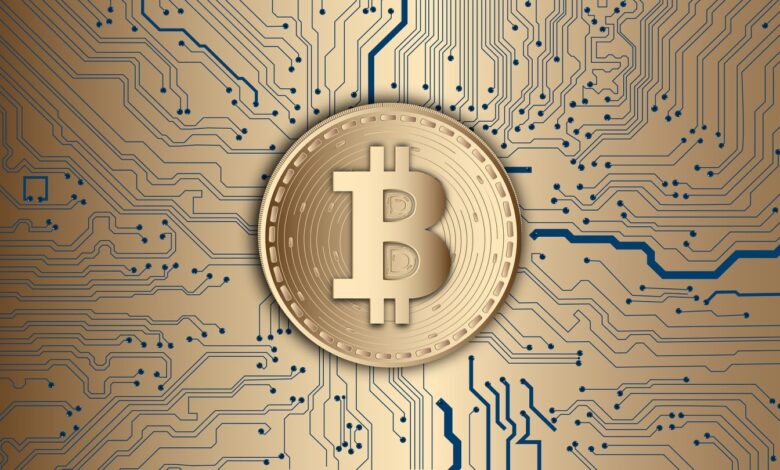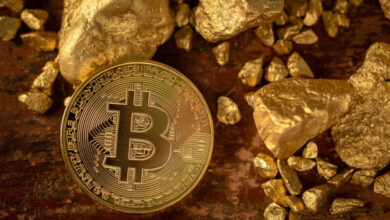How blockchain, IoT and AI are shaping digital transformation

When devices, networks, and AI work together seamlessly, they create a smarter, more connected ecosystem.
This is not a pipe dream. It’s a reality that is quickly emerging as blockchain, IoT, and AI come together. These technologies no longer operate in isolation, but rather form a trio that is redefining how industries operate.
David Palmer, chief product officer at Pairpoint by Vodafone, captures this shift: “Blockchain technology provides trust. It gave us tokenization, it gave us smart contracts, it gave us a new way of automation, which now extends to the broader business landscape.
Building trust with blockchain
In essence, blockchain technology has matured from experimental concepts into practical tools for industries. Its early potential is now evident in real-world applications such as supply chain management and decentralized finance (DeFi). Blockchain technology not only ensures trust through transparency, but also allows organizations to streamline operations and gain new efficiencies.
Ballmer described the evolution of blockchain: “It was years ago where we did a lot of proof of concepts, we did a lot of training. There were a lot of headlines. But today I really want to explore how blockchain, IoT and AI can work together to be part of the architecture.” The New Digital Infrastructure for Emerging Businesses.”
The expanding role of the Internet of Things in data generation
IoT devices are becoming ubiquitous, integrated into everything from cars and drones to home sensors. Experts predict that by 2030, there will be about 30 billion IoT devices worldwide. These devices generate vast amounts of data, which AI systems leverage to provide actionable insights. According to Palmer, “By 2030, we expect there to be more than 30 billion IoT devices. These are cars, drones, safes, and sensors, all integrated into the business process and business industry.”
But the Internet of Things is not just about collecting data. It introduces the concept of an “economy of things,” where devices transact autonomously. However, to make this work, these devices need a secure and reliable connection, a role that blockchain technology is uniquely equipped to fulfill.
AI’s appetite for reliable data
AI thrives on data, but the quality and security of that data is crucial. Public data sets have reached their limits, pushing companies to leverage private data generated by IoT devices. This creates a two-way relationship: IoT devices provide data to AI, while AI intelligently augments these devices in real time.
Ballmer stresses the importance of data trustworthiness in this ecosystem: “You need an identity that gives you the origin of the data. So we know that the data comes from a certain source, and it’s signed, but then we also need to trust the AI that it’s going to come back.”
Blockchain plays an important role in ensuring trust. It ensures the legitimacy of both data provided to AI systems and intelligence delivered to IoT devices through verified digital identities and cryptographic signature.
Digital wallets and adoption of blockchain technology
Digital wallets have become a cornerstone of this evolving ecosystem. Their global numbers are expected to grow from 4 billion today to 5.6 billion by 2030. Unlike traditional wallets, blockchain-enabled wallets go beyond cryptocurrencies, supporting functions such as account stripping and integration with tools like WalletConnect.
One of the achievements is the integration of tokenized bank deposits. These connect traditional banking with blockchain, encouraging businesses to use blockchain for their transaction needs. As a result, blockchain technology is making its way into broader business applications.
Finance meets the Internet of Things
Integrating finance into IoT devices is another step forward. Using smart contracts and artificial intelligence, devices as disparate as cars and drones can now handle payments autonomously. Toll payments, electric vehicle charging, and retail purchases are just the beginning of this combined financial system.
Palmer explained the potential: “By connecting electric vehicle chargers and vehicles to the blockchain, you can then link that to their payment credentials and their payment preferences. Then you can do a peer-to-peer transaction.”
The same principle applies to energy grids, where vehicles can sell energy during peak times and recharge it outside peak hours, thus enhancing sustainability.
Decentralized infrastructure networks
Another interesting development is the emergence of decentralized physical infrastructure (DePIN) networks. These networks allow shared or tokenized resources to create community-driven infrastructures. For example, protocols like Render pool GPU resources for gaming, while Filecoin decentralizes storage.
According to Palmer, “It’s about how communities can build specific AI, specific communication infrastructure, and specific payments infrastructure for their businesses.”
Blockchain and the role of central bank digital currencies
Governments are also pointing to the potential of blockchain technology. Central bank digital currencies (CBDCs) are being explored as a way to integrate blockchain into macroeconomic policies, such as money supply management and income redistribution. Token deposits expand the role of blockchain by digitizing traditional monetary systems.
With central bank digital currencies and token deposits, blockchain technology is moving beyond niche applications to become an important part of financial ecosystems around the world.
The metaverse and its development
The Metaverse, once a distant concept, is evolving rapidly. Innovations such as AI-powered smart glasses are changing how users interact with immersive digital content. “This year, the glasses were introduced by Meta,” Palmer noted […] I allow you to do that […] Access to your own content but you can also access artificial intelligence agents.
AI bots also add a new dimension to the Metaverse by bridging virtual and physical experiences. These same technologies and methods open opportunities in a variety of industries, including manufacturing and healthcare.
Seamless digital ecosystem
The convergence of blockchain, IoT, and AI represents a turning point in digital transformation. Blockchain technology ensures trust, IoT generates data, and AI delivers intelligence. Together, these technologies promise to create a digital operating system capable of reshaping industries and economies by 2030.
“If we can connect billions of devices to blockchain and AI through secure infrastructure, we will unleash the potential of a truly interconnected digital economy,” Palmer concludes.
See also: Artificial intelligence meets blockchain and decentralized data
Want to learn more about AI and Big Data from industry leaders? Payment Artificial Intelligence and Big Data Exhibition Taking place in Amsterdam, California and London. This comprehensive event is co-located with other leading events including Intelligent Automation Conference, Block X, Digital Transformation Weekand Cybersecurity and Cloud Expo.
Explore other enterprise technology events and webinars powered by TechForge here.
https://www.artificialintelligence-news.com/wp-content/uploads/2024/12/How-blockchain-IoT-and-AI-are-shaping-the-future-of-digital-transformation-e1734692938626.jpg

